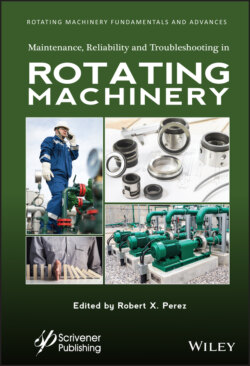Читать книгу Maintenance, Reliability and Troubleshooting in Rotating Machinery - Группа авторов - Страница 44
Planned Maintenance Percentage (PMP)
ОглавлениеPlanned maintenance percentage (PMP), which is a reliability metric for both spared and critical machines, is calculated by dividing the total number of planned maintenance hours in a given period by the total number of hours spent on all maintenance in the same period. This number is multiplied by 100 to give the final percentage. The formula for the planned maintenance percentage is as follows:
For example, let’s say the maintenance team of a chemical plant performs 500 hours of maintenance in a month. Of those 500 hours, 400 of them are planned maintenance hours. This makes our equation:
Figure 2.11 Pareto of machinery RCFA findings related to process outages. This chart points out the primary reasons for machinery-related process outages and can assist in optimizing your repair and PM strategies. In this hypothetical example, we see “End-of-Life” and “Design Issue” are the top reasons for machinery failure associated with unit outages. The “End-of-Life” results could suggest that you are either, 1) not identifying machines that are failing early enough to allow outages to be scheduled, or 2) you don’t have the right inspection intervals identified for our critical equipment. “Design Issues” failures should be analyzed to see if economics warrant design upgrades.
Ideally, at least 90% of planned maintenance time is necessary for optimal productivity. You can use the findings of Planned Maintenance Percentage to strengthen planned maintenance and reduce the likelihood of unexpected failures. There are numerous reasons to want to improve your facility’s planned maintenance percentage. Some of these reasons might include wanting to:
Reduce the amount of unplanned downtime at your site by optimizing equipment PMs.
Lower maintenance costs by reducing overtime pay and expediting costs.
Have greater control of facility budget due to planned costs as opposed to reactive costs.
